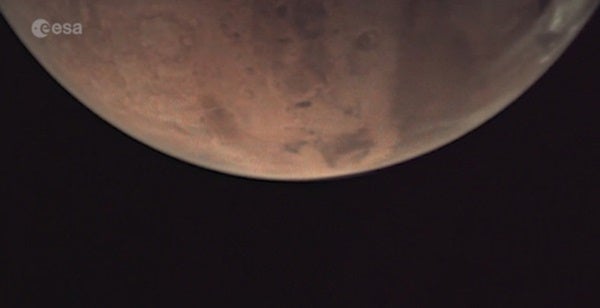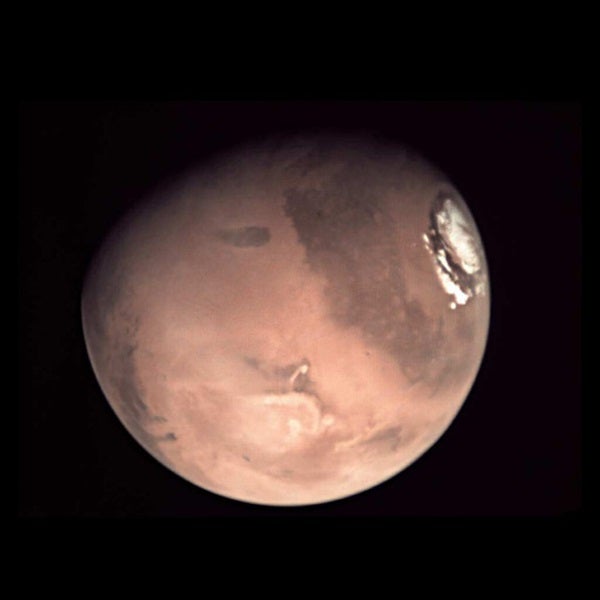But in 2007, the European Space Agency’s (ESA) flight controllers switched it back on to see if it could still be used, possibly for education or science outreach, without interfering with routine operations or the mission’s prime science investigations.
It still worked well, and the camera’s unique vantage point meant it could, for example, capture crescent images of Mars impossible from Earth. Its wide field of view provides global images of the Red Planet, a capability available on only one other Mars craft, India’s Mars Orbiter Mission.
Now, after almost a decade’s service in outreach, the camera is getting a boost.
This spring, ESA began working with the Planetary Sciences Group of the University of the Basque Country, Spain, for an initial two years to develop software and conduct studies of images, effectively promoting the humble camera to the level of professional science instrument.
Mars Express Project Scientist Dmitri Titov is delighted that the camera is opening up a new range of investigations at Mars: “Cloud tracking and dust storm monitoring, for example, are significant topics in the planetary community, and it will allow us to extend Mars Express science ‘into the atmosphere,’ filling a gap in the spacecraft’s science portfolio.”
“Thanks to the outreach, education, and social media experience, we’ve long suspected that it has intrinsic science value, and now this research group in Spain is keen on joining us in exploiting these images on a professional level.”
“This new research will support the main Mars Express investigations and significantly increase the value of our 13-year-old mission.”
The camera’s images will continue to be made available to the public as they have been.











